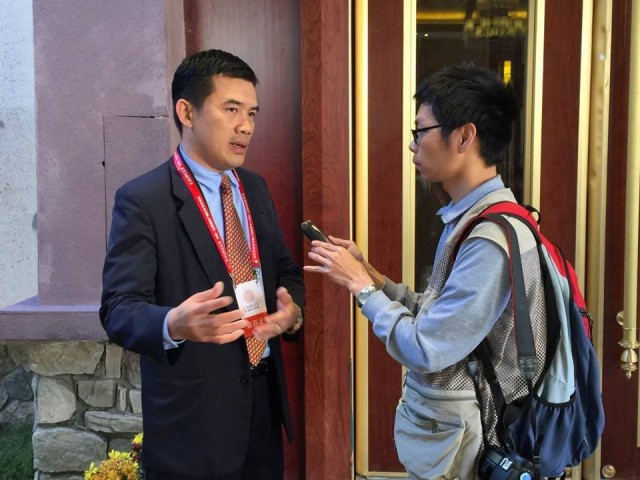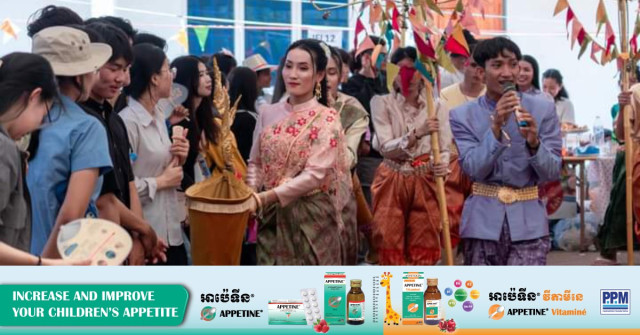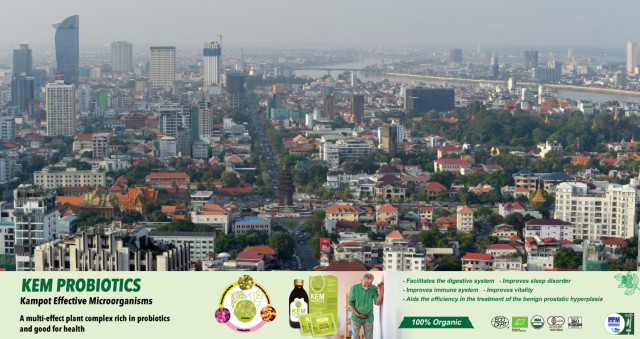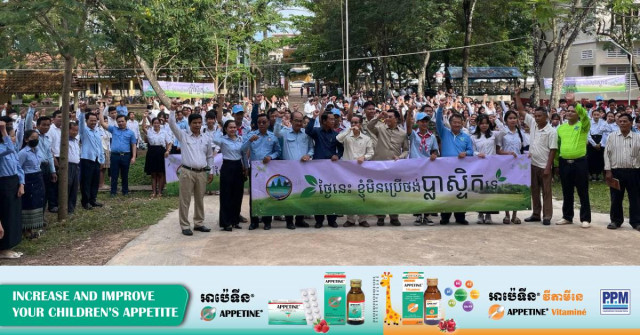Conserving Cambodians Silk with Traditional Skills
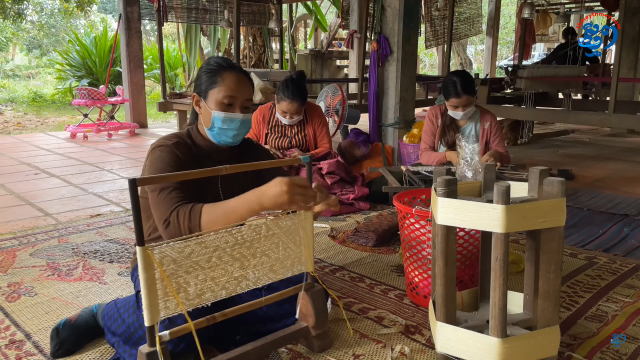
- By Hong Sreyna
- October 17, 2022 10:41 AM
For centuries, silk has been an integral part in the development of society. Based on findings by experts from the Ministry of Culture and Fine Arts, the presence of silk predates the Indian influence on Cambodia at a time when people were living clan-like societies in mountainous regions. Silk is still among the most preferred textiles for traditional outfit.
Seeing the value of silk and its importance in preserving Cambodian culture, the Institute for Khmer Traditional Textiles (IKTT) was established to revive traditional textile cultures. Among items produce are sarongs, kramas, a traditional scarf, and furniture. All are made by hand in a time-consuming process that depends greatly on the weather.
Created in 1996 in Phnom Penh, IKTT later moved to Siem Reap province where it has locations in Viheachen village in Siem Reap city and in Chub Soam village in Angkor Thom district.
_1665978699.png)
The founder, Kikuo Morimoto, created this institution to inspire and revive the Khmer traditional silk products and to make sure that production imitates the traditional process.
Among the many interlocking processes, after harvesting silk from the silkworm, the golden-colored silk must be cleaned until it is white before being dyed.
_1665979051.png)
Yarn Marina, director of the Institute for Khmer Traditional Textiles, spoke of the processes.
Yarn Marina: The institution uses organic materials to clean and dye the silk. To whiten the silk, they would follow the traditional recipes by using banana peels, leaves, and barks which are entirely natural.
Interviewer: The white silk is the result of it being cleaned. How do we get the silks in other colours?
Yarn Marina: For example, to get this red colour, we have to dye it in a type of bark called “leak”. We can dye the silk with lychee bark, coconut shells, or more to get varieties of colours according to the colour of the ingredients. However, before dying them, it is necessary for us to boil the silk. Most importantly, all of these ingredients are 100 percent natural. To get this yellow colour, we have to extract it from prahoot fruit’s shell (Garcinia vilersiana) and the green one is extracted from a liquid called “smin”.
Interviewer: Can you source all of these ingredients locally or do you import from other places as well?
Yarn Marina: We imported these ingredients from outside. But we hope to have them growing in our community one day solely to inherit and conserve them. Of course, we can still just buy the ingredients from elsewhere like we are doing right now but it will be gone eventually one day without proper conservation. Currently, there are a few ingredients growing in our institution but they are not ready to harvest.
Marina said the institution has a wide variety of ingredients for the primary colours, with a few exceptions of colours which are hard to make or maintain locally. Using organic dyes maintain the quality of Khmer silk better than chemically-made ones. At the same time, the organic dyes doe not affect the health of users and improves the beauty and durability of the silk. It is also a source of pride for our nation since everything is organic and handmade, all put together by talented and hardworking artisans.
After serving in the institution for nearly 20 years, Yarn Marina noted the value of each strand of silk.
Yarn Marina: First and foremost, our silk is beautiful and elegant. Second, traditional Khmer silk is valued by everyone. and praised around the world.
Another contributing factor that led to worldwide appreciation is the work behind the scenes that brought the vividly colored silk to life. Mot Rina, spoke of the dyeing process in which she is a key person.
Mot Rina: There are several issues in dying the silk mainly caused by using organic ingredients. The weather plays an important role as well. For example, if we would like to have the colour green or silver, the colour might not appear as what we planned. If the weather is sunny and clear, the colour would appear to be fresh and beautiful. On the other hand, the colour might appear to be gloomier and darker corresponding to the dark sky or gloomy weather. During the monsoon season, we have to double our guards. For instance, it would take one to two weeks to finish dying on sunny days. But if it is about to rain, then it might take three or four weeks. In the case of “leak”, it would take around three days to dry on a bright, sunny day. But if it is about to rain, it would take up to 10 days. In addition, the result could be different from our expectations, then, we add more colour or even dye the silk all over again. The benefit of dying the silk in organic ingredients is that the more you use the more beautiful it will be. The silk is going to be smooth and shiny and the colour will not fade easily.
Interviewer: Do you love what you are doing right now?
Mot Rina: Of course, I have been working for 16 years already ever since I was 16 years old.
Rina is willing to keep doing this work because it is not overwhelming though it depends a lot on her energy. Regardless of the challenges, Rina says she still loves to dye silks. The dye does not affect her skin. A quick wash using soap and lemon will remove it easily from her skin.
Besides the uniqueness of organic dye, the institution still conserves the use of ikat which are the specific patterns imprinted on the silk.
Even though the present-day ikat are innovative, the value of traditional ikat is still important for the next generation. According to Yarn Marina, only traditional ikat are available at IKTT. And all of the ikat designs are carefully kept and recorded in papers by Kikuo Morimoto, the founder of IKTT himself before he passed away in 2017.
Yarn Marina: We only make traditional ikat that is recorded by Kikuo Morimoto who had dedicated his life to transcribing and collecting the information from provinces, especially, Takeo. We, as a next generation of Khmer people, recreate this design. Presently, nobody really seems to weave traditional ikat anymore and we are prone to losing those precious ancient customs. Even if it may be difficult, we will keep on going. If we cannot complete an ikat right by today, even with all of the materials prepared, there is still a chance to finish it by tomorrow.
Om Siek Houy, also a committed weaver, stated:
Om Siek Houy: The Khmer traditional ikat is versatile. But the process is extremely time-consuming. The braiding and pattern are much more difficult than the modern ikat. The modern ones are easier to make with less complicated patterns and it will be done sooner. The traditional ikat are particularly difficult.
Interviewer: What are some difficulties in braiding the traditional ikat?
Om Siek Houy: There are many factors but one of them is the background stories behind each pattern of the ikat. Therefore, we have to be careful because each pattern tells a story. For instance, the Bodhi tree is decorated with dragons and temples that connect to one another. Frankly, I myself do not know the whole story of this.
Siek Houy steered the path of her life with IKTT since the institution brings her more incentive then if she were to do this business by herself. At home, she had to braid and weave silk by herself which demanded a lot of energy, multi-tasking and a greater financial investment. At IKTT, she can focus on one more specific task as well as a more sufficient income. At the same time, learning new techniques can be done easier than if she were to conduct the same activity at home.
In terms of equipment, IKTT still uses manual wooden looms with wooden reeds despite the widespread use of metal reeds. Other textile manufacturers shifted to using metal reed because it is more convenient and the weavers can alternate the silk without having the silk and reed all tangled together. On the other hand, the wooden reed requires frequent silk changes and will be disposed of after the second use. Marina said the institution’s specialty is replicating the use of wooden reeds like in the ancient days. Since the reeds are made of bamboo, the process of weaving must be extra careful. If one rushes with the weaving, the reed will break and the final product will not be beautiful and perfect. Moreover, weaving requires extreme concentration and examination to cross-check the weaving pattern.
Yarn Marina: The weavers are extremely committed and patient, otherwise, the pattern will be broken or disconnected. Once the shuttle is tossed, the weavers have to make sure that the pattern is synchronised with the rest of the patterns. Thus, the applied pressure is important in this case. If the pressure is too light, the pattern will not hold. And if it is too strong, the pattern will break.
After the weaving process, the textile is not the final product. To ensure that the products are to be sold with a right standard of quality, another process is to double-check the textile.
Yarn Marina: After weaving, we will have to check on the colouring and the overall threads. However, since IKTT abides by using traditional methods and natural materials, there is room for unexpected occurrences to happen like the changing weather. Especially, when it rains, it is difficult for us to guarantee because the rain will affect the silk making it less beautiful than usual. Besides the weather, it also depends on the mental well-being of the weavers. If they are not feeling well, it will affect the productivity of the work as well. If they are healthy and feeling bright, the result will be shown in the textile as it will be beautiful and lively.
Therefore, according to Marina, health and emotional factors are essential. Every project requires the weavers to put in full concentration and commitment. And the result will be beautiful and lively according to their effort.
Song Daphea contributed to the story.






